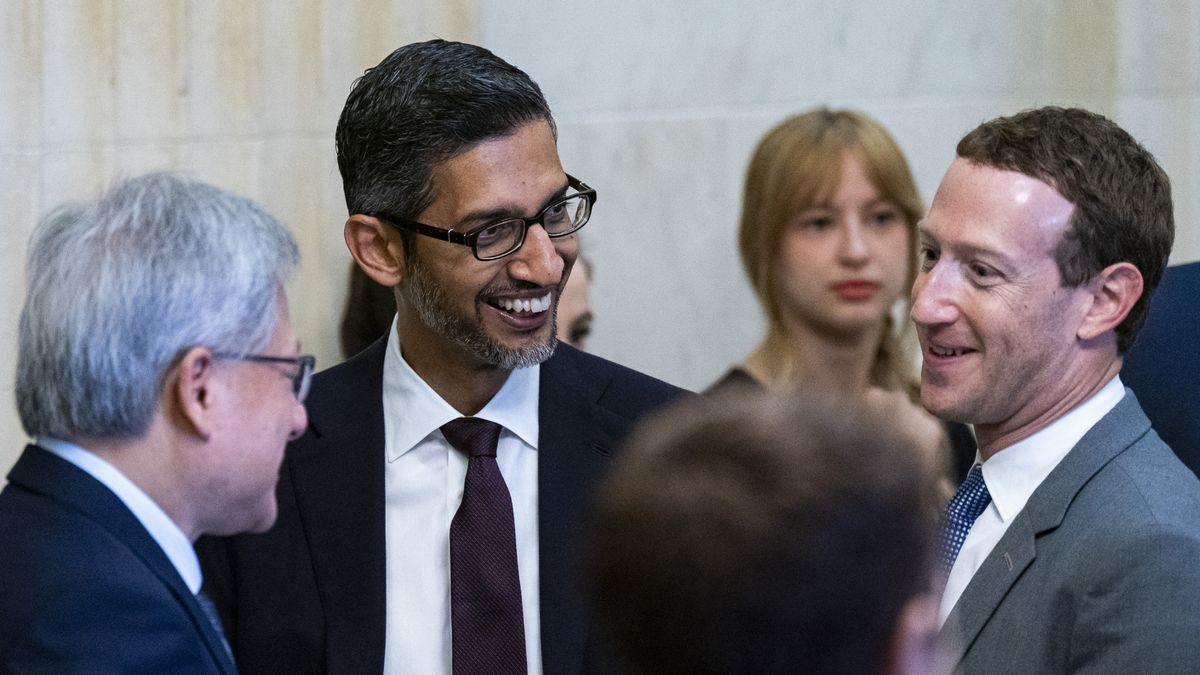Nvidia and Broadcom Lead AI Chip Supply Chain with Significant Growth Projections
2 Sources
2 Sources
[1]
Nvidia, Broadcom supply chains 'sound the best,' with upward revisions coming: KeyBanc (NVDA:NASDAQ)
Following recent channel checks, the supply chains of Nvidia (NASDAQ:NVDA) and Broadcom (NASDAQ:AVGO) "sound the best," as upward revisions are coming to chip-on-a-wafer-substrate supply, KeyBanc Capital Markets said. "NVDA is now revising up its [chip-on-a-wafer-substrate] demand modestly this year to 370K interposers, which Nvidia is modestly raising its demand outlook to 370K interposers this year, representing over 90% growth, and increasing next year's supply estimates to 530K interposers (over a 40% year-over-year increase and 10% above prior capacity). Broadcom's supply outlook is lifted due to strong TPU volumes from Google, broader AI workload adoption, and anticipated new AI ASIC ramps from OpenAI and Apple. Stronger-than-expected base model demand (especially in China) for iPhone 17/Pro offsets weak global demand for the iPhone 17 Air, resulting in largely unchanged total builds but with increased Pro and decreased Air volumes.
[2]
These 2 AI stocks stand out as supply chain winners, says KeyBanc By Investing.com
Investing.com -- KeyBanc analysts singled out Nvidia and Broadcom as the strongest names in their latest semiconductor supply chain checks, citing both companies' rising capacity and major AI wins as reasons they remain best positioned in the sector. For Nvidia, the broker pointed to stronger-than-expected demand and capacity expansion. The AI chipmaker has revised its advanced packaging (CoWoS) supply for 2025 to 530,000 interposers, representing more than 40% growth from this year. Nvidia had asked for 600,000 units for 2026 but was allocated 530,000, as TSMC seeks to avoid overbooking. With manufacturing yields improving, Nvidia is on track to ship about 30,000 AI racks in 2025 and at least 50,000 in 2026. KeyBanc also cited higher performance specifications for its next-generation Rubin GPU, designed to maintain a clear lead over AMD's upcoming MI400 platform. The new requirements include boosting memory transfer speeds to 10 Gbps, up from 8 Gbps, and lifting power needs to 2.5kW versus 1.8kW previously. "We're hearing that this is being motivated by NVDA's desire to maintain a significant performance gap and product leadership vs. AMD even once Helios is released," KeyBanc said in a Monday report. Broadcom's position looks equally strong. The company raised its 2026 CoWoS supply target to 190,000 units, over a 160% jump from the prior year. KeyBanc said the company's outlook is supported by several drivers, including delays to TPU7e chips that allow the company to retain full control of Google's TPU franchise through 2026. TPU volumes are expected to more than double in 2026 as Google broadens the use of its TPU technology with external customers. The firm also pointed to major new AI ASIC wins, including OpenAI with an estimated 400,000-500,000 units and Apple at about 100,000 units. Reflecting this backdrop, KeyBanc boosted its price targets on both names, raising Nvidia to $250 from $230 and Broadcom to $420 from $400, while reiterating Overweight ratings. Beyond the two supply chain leaders, the analysts flagged positive implications for Monolithic Power Systems, which has gained share in Nvidia's Blackwell Ultra platforms, and Lattice Semiconductor, which should benefit from rising AI server rack shipments. Supply checks for memory supplier Micron were also positive, with hyperscaler demand pointing to 50% DRAM growth in 2026. Conversely, Intel faced continued manufacturing yield challenges, and ON Semiconductor was weighed down by weak auto demand.
Share
Share
Copy Link
Nvidia and Broadcom are emerging as leaders in the AI chip supply chain, with both companies revising their demand and supply projections upward. This growth is driven by increased AI workload adoption and major wins with tech giants.

Nvidia and Broadcom Lead AI Chip Supply Chain
Recent channel checks by KeyBanc Capital Markets reveal that Nvidia (NASDAQ:NVDA) and Broadcom (NASDAQ:AVGO) are emerging as the strongest players in the AI chip supply chain, with both companies revising their demand and supply projections upward
1
.Nvidia's Impressive Growth Trajectory
Nvidia is making significant strides in expanding its capacity and meeting the growing demand for AI chips. The company has revised its chip-on-a-wafer-substrate (CoWoS) demand for 2023 to 370,000 interposers, representing over 90% growth
1
. Looking ahead to 2025, Nvidia has increased its supply estimates to 530,000 interposers, marking a 40% year-over-year increase and 10% above prior capacity projections2
.With improving manufacturing yields, Nvidia is on track to ship approximately 30,000 AI racks in 2025 and at least 50,000 in 2026
2
. The company is also focusing on maintaining its technological edge by enhancing the specifications of its next-generation Rubin GPU. These improvements include boosting memory transfer speeds to 10 Gbps from 8 Gbps and increasing power requirements to 2.5kW from 1.8kW2
.Broadcom's Strong Market Position
Broadcom is equally well-positioned in the AI chip market, with its supply outlook bolstered by several factors. The company has raised its 2026 CoWoS supply target to 190,000 units, representing an impressive 160% jump from the previous year
2
. This growth is supported by strong TPU volumes from Google, broader AI workload adoption, and anticipated new AI ASIC ramps from major tech players1
.KeyBanc analysts highlight Broadcom's significant wins, including retaining full control of Google's TPU franchise through 2026 and securing major new AI ASIC contracts. These include an estimated 400,000-500,000 units for OpenAI and about 100,000 units for Apple
2
.Related Stories
Industry Implications and Other Players
The strong performance of Nvidia and Broadcom has positive implications for other players in the semiconductor industry. Monolithic Power Systems has gained share in Nvidia's Blackwell Ultra platforms, while Lattice Semiconductor is expected to benefit from rising AI server rack shipments
2
.Memory supplier Micron also received positive supply checks, with hyperscaler demand pointing to 50% DRAM growth in 2026
2
. However, not all companies are faring equally well. Intel continues to face manufacturing yield challenges, and ON Semiconductor is experiencing weak auto demand2
.Market Outlook and Analyst Perspectives
Reflecting the strong performance and growth prospects of Nvidia and Broadcom, KeyBanc has boosted its price targets for both companies. Nvidia's target was raised to $250 from $230, while Broadcom's was increased to $420 from $400, with Overweight ratings maintained for both stocks
2
.As the AI chip market continues to evolve rapidly, Nvidia and Broadcom appear well-positioned to maintain their leadership roles, driven by technological advancements, capacity expansions, and strategic partnerships with major tech companies.
References
Summarized by
Navi
[1]
Related Stories
Recent Highlights
1
Google launches Gemini 3 Flash as default AI model, delivering speed with Pro-grade reasoning
Technology

2
OpenAI launches GPT Image 1.5 as AI image generator war with Google intensifies
Technology

3
OpenAI launches ChatGPT app store, opening doors for third-party developers to build AI-powered apps
Technology








